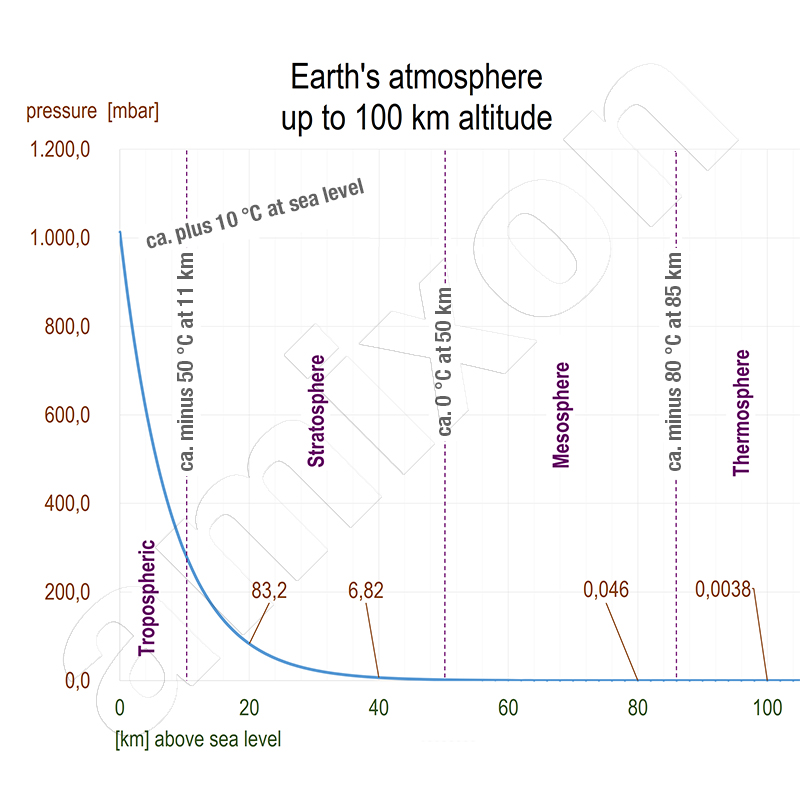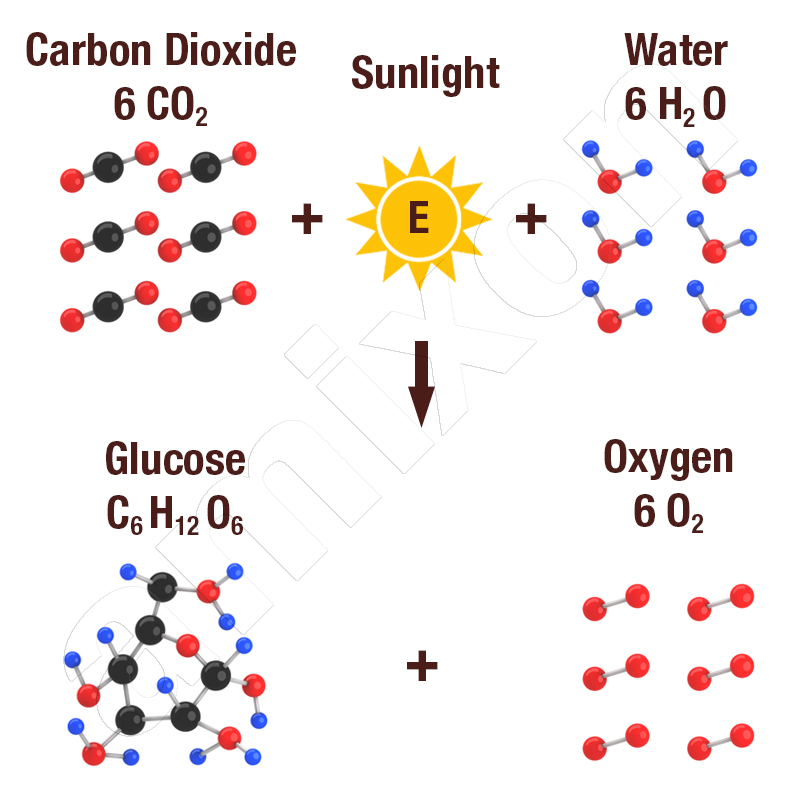![[Translate to English:] CO2 Footprint und Erderwärmung [Translate to English:] CO2 Footprint und Erderwärmung](/fileadmin/amixon/Articles/0117_CO-Footprint/See_Umweltschonung.jpg)
CO2 Footprint and global warming
The preservation of an intact environment and the human desire for prosperity and luxury are difficult to reconcile. Almost every business model geared towards profit has a negative impact on the environment. The more people live on the earth, the more noticeable the imbalance becomes. Ultimately, the earth does not need people. However, flora and fauna are directly dependent on an intact environment.
To protect the environment, we regularly reflect on the impact of our business activities. We also take responsibility for the safety of our employees and customers.
amixon® takes responsibility and contributes to reducing greenhouse gas emissions
Based on the knowledge that human-induced carbon dioxide emissions have a negative impact on our environmental conditions, an attempt was made to evaluate these actions with an individual carbon footprint. Somewhat more broadly, the term "ecological footprint" was coined. Footprints can relate to a production process, to the life cycle of a product, or to a business model. There are portals on the Internet where you can enter your individual lifestyle habits into a table to calculate your personal carbon footprint.
amixon GmbH also tries to fulfil its social responsibility. As a production-intensive mechanical engineering company, the options are limited. amixon® has defined four fields of action for itself.
1. Efficiency and raw material savings during manufacturing:
In addition to the raw material logistics practiced to date, amixon® has established methods that ensure maximum material utilization. Production is carried out by processing automatically created worklists. This is done with a view to making the best possible use of materials and minimizing transport ways. Our centrally controlled production management system constantly iterates process optimizations.
2. Renewable energy generation:
Our photovoltaic system can generate up to 450 kilowatts of electrical power, and an neighbouring wind turbine produces up to 2,000 kilowatts. In the future, we will install large electricity storage facilities to use only green electricity. The heating systems and lighting technology throughout the plant are state of the art.
amixon® KoneSlid® mixer / blender
3. With an amixon® device, you work in the most economical way possible and at the same time meet your environmental goals in the best possible way. Due to the hygienic design, many amixon®-mixers have been in use for more than 30 years, some even for more than 40 years.
a. Energy-saving operation of amixon® machines
Helical mixers work according to the principle of shear mixing. They convey the mix at low speed. When a helical mixer is operated in a vertical position, it produces ideal mixing grades in an extremely short time. The drive power is low, the respective mixing time short.
b. Maximum efficiency in the use of raw materials
amixon® mixers can discharge free-flowing mixing goods almost completely. Adhering mixing goods can also be discharged with high efficiency. Residues are reduced to a minimum. In practice, many amixon® mixers discharge so thoroughly that subsequent mixing jobs (with different components) can be carried out without intermediate cleaning. Almost all raw materials are thus processed into the final product and end up on the market.
Innovative product developments: "Gyraton®" and "KoneSlid®" "SpherHelics®".
ComDisc® tools
c. Minimizing the generated waste
The cleaning effort is drastically reduced. Waste prevention is important in terms of the environmental footprint, especially given the fact that powdered waste has to be incinerated and wash water residues have to be treated.
d. Long service life of the amixon® machines due to wear reduction
System-related, amixon® mixers operate at a low rotational frequency. This has a significant influence on the wear of the mixing tools and the service life of all seals. Wear increases with the square of the relative speed between the mixing goods and the mixing tool. Less wear ultimately means less contamination of the product. If a production machine can be used profitably for a long time, raw material resources are preserved.
e. Retrofitting:
The further development of the amixon® process equipment is carried out in such a way that even older amixon® machines on the market can be retrofitted to a large extent. This particular aspect should be emphasised. amixon® carries out the retrofitting of older mixers at the location where the mixer is installed. Disassembly only takes place in exceptional cases. This approach also favors a long service life and conserves raw material resources.
4. Continuous training of all employees
The aforementioned guidelines are being continuously applied and trained.
Oxygen in the air we breathe is essential for life
The oxygen in the air we breathe is essential for life. It is available all the time. An adult at rest inhales and exhales a volume of about 0.5 liters of air about 10 to 16 times. The air requirement of an adult at rest is 5 to 8 liters per minute. This can increase up to 100 liters per minute during exercise. The inhaled air contains 20.95%O2 and approx. 0.03%CO2, the exhaled air contains only 15.3%O2 but already 3.7%CO2 [volume percent]. A carbon dioxide concentration of 8% in the air we breathe would be fatal for humans. This is far from the normal concentration of just 0.03%, but as carbon dioxide gas is 1.5 times heavier than air, the CO2 gas can reach dangerously high concentrations in certain circumstances. Large fermentation silos where livestock feed is fermented and poorly ventilated wine cellars are potential sources of CO2 poisoning. At minus 78.5°C, the carbon dioxide gas freezes. CO2 dry ice is used for cooling and preservation. "INERTISATION"CO2 gas can also be used to extinguish fires.
Plants, lichens, mosses and also the underwater flora need carbon dioxide gas for their metabolism. CO2 is also present in dissolved form in natural waters.
The earth's air layer
is subject to gravitation. It rotates approximately with the rotation of the earth. Up to an altitude of about 80 km, the air is relatively homogeneously composed of the gases nitrogen (N2) 78.08 %, oxygen (O2) 20.95 %, argon (Ar) 0.93 % carbon dioxide (CO2) 0.03 % (data in volume percent).
The air pressure decreases logarithmically and is only 0.05 mbar at an altitude of 80 km. It is interesting to note that different temperatures prevail at different altitudes. Our weather is essentially determined by the physical conditions in the troposphere. Up to an altitude of 12 km, water vapor (in the form of clouds) is present in varying concentrations.
Photosynthesis enables the storage of solar energy
Chlorophyll-containing plants grow and store energy through photosynthesis. They have been performing these value-adding metabolic processes for many hundreds of millions of years. Solar energy, carbon dioxide, water and a small number of trace elements in the soil produce biogenic basic substances. At the same time, oxygen molecules are released into the atmosphere. Humus is formed from the dead substance of flora and fauna.
Microorganisms did the groundwork for the valuable materials available today: peat, lignite, hard coal, natural gas and crude oil. The stored biogenic mass is now a sought-after raw material and fuel. Its use has been massively increased since industrialization. Fossil fuels are still the basis of worldwide energy production and material synthesis. Their combustion and conversion results in plastics, countless chemicals, pesticides, medical products and everyday goods, but unfortunately they also generate useless residues and huge amounts of carbon dioxide gas.
Recommended reading: In his book "Stoffwechsel – Auf dem Weg zu einer solaren Chemie für das 21. Jahrhundert”, the entrepreneur, scientist and author Dr. Hermann Fischer promotes the idea of obtaining as many everyday substances as possible from plants.
Carbon dioxide and carbon dioxide equivalents
Unfortunately, carbon dioxide is also an effective greenhouse gas. They are found in the weather-defining layer of air up to an altitude of 14 km, along with other greenhouse gases such as water vapour, methane and nitrous oxide. Their greenhouse effects differ: Methane is more than 20 times more potent than carbon dioxide, nitrous oxide is almost 300 times more potent and hydrofluorocarbons are up to 16,000 times more potent.
For many millions of years, the CO2 content of the atmosphere was almost constant due to the balanced metabolism of the biosphere. Flora and fauna have absorbed carbon dioxide from the air over hundreds of millions of years. Microorganisms decomposed the remains, which became fossil fuels under pressure and heat. Scientists have calculated that a million years' worth of fossil carbon storage is now degraded and released as carbon dioxide gas in just ten months.
Increase in CO2 concentration in the atmosphere
It is scientifically proven that the CO2 concentration in the atmosphere has increased over the last hundred years. Although the CO2 content in the atmosphere is very low, its influence on global warming as a relevant greenhouse gas is very large. Greenhouse gases act like thermal insulation. Solar radiation is reflected from the earth as thermal radiation into space. However, this reflection takes place only in part. The greenhouse gases in the air layer reflect the heat radiation back to earth. In the right amount, this ensures a balanced climate. Too many greenhouse gases, however, increase insulation. The resulting global warming is increasingly causing problems. Heavy downpours, lack of rainfall, rising sea levels and shifting climate zones are the result. More than 100 countries have therefore committed to reducing their CO2 emissions. The aim is to limit global warming to 2°C by 2100. After that, the CO2 content in the air should even be reduced.
© Copyright by amixon GmbH

![[Translate to English:] [Translate to English:]](/fileadmin/user_upload/Gyraton_GM_Bild_Person_und_Prinzip.jpg)






![[Translate to English:] [Translate to English:]](/fileadmin/user_upload/oil-consumption.jpg)